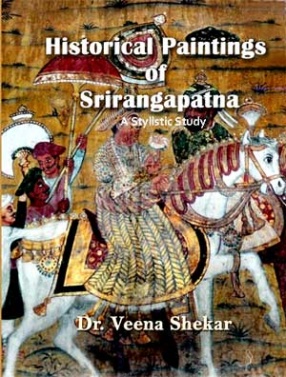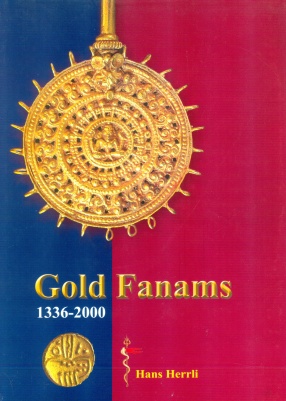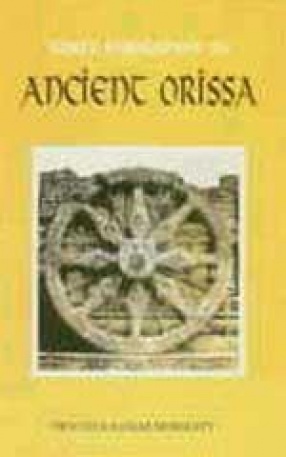Historical Paintings of Srirangapatna: A Stylistic Study
In stock
Historical paintings or history paintings are considered to be the highest form of art next to religious painting. They are types of figurative painting, which illustrate historic or legendary incidents in a deliberately grand way. They are those that are politically motivated, depicting a war scene, a revolution, or a political event or events. The portrait of an emperor in all his finery could also be called a historical painting. Hence a well-executed historical painting apart from realistically presenting a heroic subject is also resplendent in colour, costume, drama and action.
The Daria Daulat Bagh in Srirangapatna, Karnataka, contains the largest mural in India depicting a historical scene in action. Representing a whole battle from the history of Mysore in four panels, these paintings are in many respects unique. They also happen to be the first visual record of the battle of Polillur, in which the great Mysore ruler Tipu Sultan fought and won against the British.
The 18th century was an eventful one in the history of Karnataka. Several battles were fought for supremacy and power. Some were won and some were lost. This consequentially brought a change in the thematic rendering in the art of painting in Karnataka. Historic subjects as a result were commissioned for propagating the victories and achievements of the ruler. European contact in Karnataka was also felt most strongly around this time. Introduction of Western concepts, new trends of art and new tools opened up novel theories in the Indian art scene forcing a deviation .
The specific objectives of the study for the present book which is a part of the doctoral thesis of the author have been to trace the development of Historical paintings in India and study the social, cultural, political and artistic background of 18th century. A detail exploration of the paintings of Daria Daulat Bagh in Srirangapatna is undertaken and the development of style and influences on the paintings is traced.The author has collected first hand information by personally visiting all the sites mentioned in the book. Museums and archives in France and London that have all the important paintings mentioned in the first chapter were personally visited. Many important sites in Karnataka that have mural paintings were visited and information regarding their date and style of painting gathered. All the paintings related to the study were examined and photographed personally on the site.
During the course of the research a hypothesis was framed related to the existence of a mixed variety of elements in the paintings leading to different assumptions such as the presence of a French hand or British touch or a simplified conclusion that it is a continuation of the diffident and decadent local style. Unfortunately it is difficult to ascribe the style of these paintings as belonging to any particular stylistic phase or development. The artists were native and probably belonged to the artists’ family that had migrated to Srirangapatna from Vijayanagar after its fall. At the same time there was a strong Persian aura, lingering in the background that could not be brushed aside. To have a clear understanding of the Persian elements in the paintings, the author undertook a journey to Iran in search of information that could throw light on the style of the paintings of Daria Daulat Bagh. The visit to Iran (Teheran, Shiraz, and Isphahan) was an eye-opener in more ways than one. The information gathered gave a new dimension to the study of the paintings in hand. The result was a comparative study of the paintings at home with those of the palaces in Isphahan throwing light on the various connections pertaining to language, literature, political issues and culture milieu of the period.
The book is also an attempt to understand and analyse certain issues that remain unanswered in assessing Tipu’s place in the history of Karnataka. His religious fanaticism is often questioned by British and Hindu authors. Even the character of Tipu has been so elusive that many Islamic writers even today claim that he has only been misrepresented. Even as one rummages through the myriad number of books written on this potentate, one notices that there is little information on the true personality and traits of this king who was believed to be more than a terror to the British power in India. This book hence is a sincere effort, unbiased, in understanding the life, predilection, and contacts developed by Tipu during his tenure as a ruler and his interest in portraying a historical event through the medium of painting. Fortunately we get a clue to his artistic frame of mind, his interest political or personal and his contacts with other countries, his relations with his feudatories by a thorough inspection of the paintings in this study.
The present book is also a beginning of a search for truth and in the process a few issues have been raised such as the aspect of repainting, identification of characters and attempts at preservation.





There are no reviews yet.